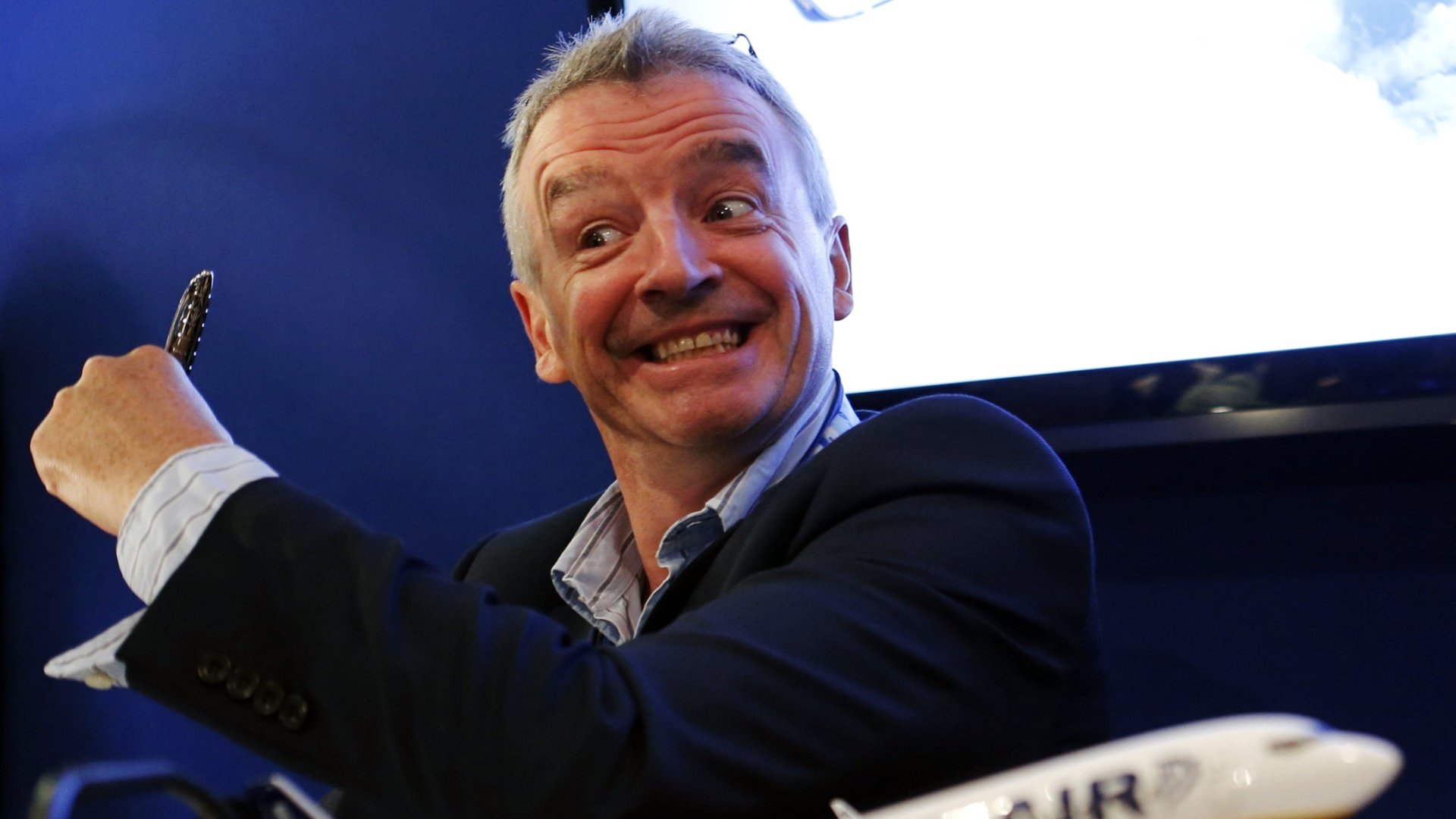Stung by fuel costs, Ryanair is flying slower and cheaper
At least at the top line, Ryanair’s quarterly results looked good. Compared to last year’s first quarter, the budget airline saw an increase in both the number of passengers it serves as well as its revenue. At the bottom line it was another story: Profits plunged by 21% to €78 million ($103 million) as the airline was crushed by rising fuel prices.


At least at the top line, Ryanair’s quarterly results looked good. Compared to last year’s first quarter, the budget airline saw an increase in both the number of passengers it serves as well as its revenue. At the bottom line it was another story: Profits plunged by 21% to €78 million ($103 million) as the airline was crushed by rising fuel prices.
In order to find a way to eke out more profits, Ryanair is flying at slower, more economical, speeds in order to use less fuel, adding about two minutes to every hour of flight time. Chief Financial Officer Howard Millar told The Financial Times that fuel “is our single biggest cost, so we have a proportionally bigger problem than everybody else from these higher fuel prices.”
As airplanes fly faster, the amount of aerodynamic drag can increase drastically. To find the most economical speed, especially when fuel costs are sky-high, airlines like Ryanair are increasingly utilizing cost-index flight planning, which calculates the price of a flight in fuel, staffing costs, maintenance and a host of other factors, and tells pilots how to set their speed in real time.
The only downside to slower flights is for the passengers—a few minutes per hour doesn’t sound so awful, but collectively it could add up to millions of hours of time lost flying. But based on Ryanair’s other revenue-enhancing programs, the airline isn’t overly worried about a few unhappy customers.
CEO Michael O’Leary noted that areas where Ryanair were doing particularly well were in the “development of reserved seating, priority boarding, and higher admin/credit card fees.” What that means in practice is charging passengers more for actions that they once did for free, or more cheaply, and prolonging the discomfort of an budget flight just a little bit longer.